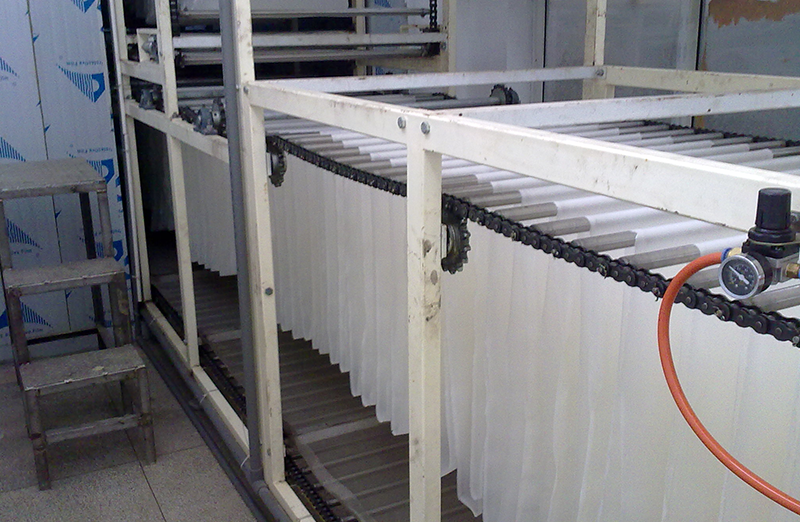Email: [email protected]
 2024.06.17
2024.06.17
 Industry News
Industry News
The dried noodle machine ensures consistent quality and uniformity in the produced noodles through several mechanisms:
Precise Mixing Techniques: The dried noodle machine employs state-of-the-art mixing technologies, such as planetary mixing or continuous mixing systems. These methods ensure that the ingredients are uniformly blended, eliminating any pockets of dry flour or uneven hydration. In planetary mixing, for instance, the dough is kneaded using multiple rotating blades that move in different directions simultaneously, thoroughly incorporating all components. Similarly, continuous mixing systems utilize augers or screws to continuously feed and mix the ingredients, maintaining a consistent dough consistency throughout the process.
Controlled Extrusion Methods: The extrusion stage is where the dough is shaped into noodle strands of consistent thickness and texture. To accomplish this, the dried noodle machine integrates advanced extrusion technologies, such as twin-screw extruders or vacuum extrusion systems. These systems allow for precise control over key parameters such as pressure, temperature, and shear forces applied to the dough. Twin-screw extruders, for example, utilize intermeshing screws to convey and compress the dough, resulting in uniform flow and compaction. Vacuum extrusion systems, on the other hand, leverage differential pressure to regulate the expansion and shaping of the dough, ensuring consistent noodle geometry.
Temperature and Humidity Regulation: Drying is a critical step in noodle production, as it removes excess moisture and stabilizes the product for long-term storage. The dried noodle machine incorporates advanced drying technologies, such as convection drying or infrared drying systems, to achieve precise control over temperature and humidity conditions. Convection drying utilizes heated air circulation to evaporate moisture from the noodle surface, while infrared drying selectively targets water molecules, accelerating the drying process without compromising texture or flavor. Additionally, some machines feature humidity sensors and feedback control loops to dynamically adjust drying parameters based on ambient conditions, ensuring consistent drying rates and preventing overdrying or underdrying.
Precision Cutting and Sizing: Once dried, the noodle strands are cut into uniform lengths and widths to facilitate packaging and cooking. The dried noodle machine employs precision cutting mechanisms, such as rotary cutters or laser-guided slicers, to achieve unparalleled accuracy and consistency in noodle sizing. Rotary cutters utilize sharp blades or wheels to slice the noodles to the desired dimensions, while laser-guided slicers offer micron-level precision, ensuring uniformity across thousands of noodle strands. Moreover, some machines feature adjustable cutting settings, allowing operators to customize the noodle size and shape according to customer preferences or market demands.
Quality Assurance Technologies: To uphold stringent quality standards, dried noodle machines integrate advanced quality assurance technologies, such as computer vision systems or spectroscopic analyzers. These systems employ high-resolution cameras, sensors, and algorithms to inspect each noodle strand in real-time, detecting defects such as discoloration, breakage, or irregular shape. In conjunction with machine learning algorithms, these technologies can classify and reject non-conforming noodles, ensuring only products meeting predefined criteria are packaged for distribution. Furthermore, some machines feature automated reject mechanisms or diverters, which remove defective noodles from the production line without disrupting workflow, minimizing waste and maximizing yield.
INSTANT RICE NOODLE/DRIED RICE NOODLE PRODUCTION LINE
